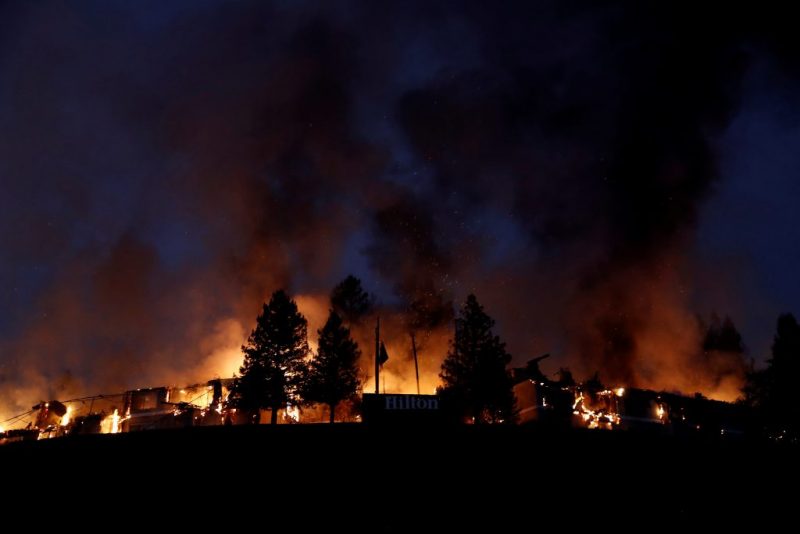CAL FIRE concludes PG&E equipment did not cause 2017 Tubbs wildfire

The California Department of Forestry and Fire Protection (CAL FIRE) said on Thursday that investigators determined PG&E equipment did not cause the October 2017 Tubbs wildfire.
CAL FIRE determined that the fire was instead caused by a private electrical system adjacent to a residential structure. Investigators did not identify any violations of state law related to the cause of this fire.
The Tubbs Fire in Sonoma County started on Oct. 8, 2017. It burned a total of 36,807 acres, destroyed 5,636 structures and resulted in 22 civilian fatalities and one firefighter injury. In total, the October 2017 Fire Siege involved more than 170 fires, including the Tubbs Fire, and burned approximately 245,000 acres in Northern California. About 11,000 firefighters from 17 states and Australia battled the blazes.
“Without question, the loss of life, homes, and businesses during these devastating wildfires is heartbreaking, and we remain focused on helping affected communities recover and rebuild,” PG&E said in a statement following the release of information by CAL FIRE. “The safety of our customers and the communities we serve is our most important responsibility, and we are committed to assessing our infrastructure to further enhance safety and help protect all of the customers we serve from the ever-increasing threat of wildfires.”
PG&E added that it is still facing litigation, potential liabilities and financial challenges, including the recent credit ratings agency downgrades to below investment grade.
Earlier this month PG&E announced it would file for Chapter 11 bankruptcy on or about Jan. 29.
“Resolving the legal liabilities and financial challenges stemming from the 2017 and 2018 wildfires will be enormously complex and will require us to address multiple stakeholder interests, including thousands of wildfire victims and others who have already made claims and likely thousands of others we expect to make claims,” PG&E said.
PG&E noted that it is enhancing and expanding its Community Wildfire Safety Program. The company monitors wildfire risk in real-time from its Wildfire Safety Operations Center and is expanding its network of weather stations and installing approximately 600 new high-definition cameras in high fire-threat areas.
It is also increasing its focus on vegetation that poses a higher potential for wildfire risk, conducting accelerated safety inspections of electric infrastructure in high fire-threat areas and disabling automatic reclosing of circuit breakers and reclosers in high fire-risk areas during wildfire season. PG&E will turn off electric power as a last resort if extreme fire danger conditions are forecasted.
PG&E is also undertaking system hardening and resiliency work including installing stronger, more resilient poles and covered power lines, replacing equipment to reduce risk further, tailoring upgrades based on terrain and weather conditions and piloting new resilience zones to provide electricity to central community resources during Public Safety Power Shutoff events.
Recent state and federal climate assessments have found that the threat from catastrophic wildfires, extreme weather, and higher temperatures is increasing, PG&E said. California’s Fourth Climate Change Assessment found the average area burned in the state would increase 77 percent if greenhouse gas emissions continue to increase. It also found that prolonged drought and higher temperatures will triple the frequency of wildfires.
More than half of PG&E’s service area is now considered to be in extreme or high fire-risk areas as designated by the CPUC’s Fire-Threat Map. PG&E noted that multiple factors contribute to wildfire risk across PG&E’s service area including extensive tree mortality following the five-year drought and an extended fire season due to long periods of high temperatures, extreme dryness, tinder-dry grass, and record-high winds.
